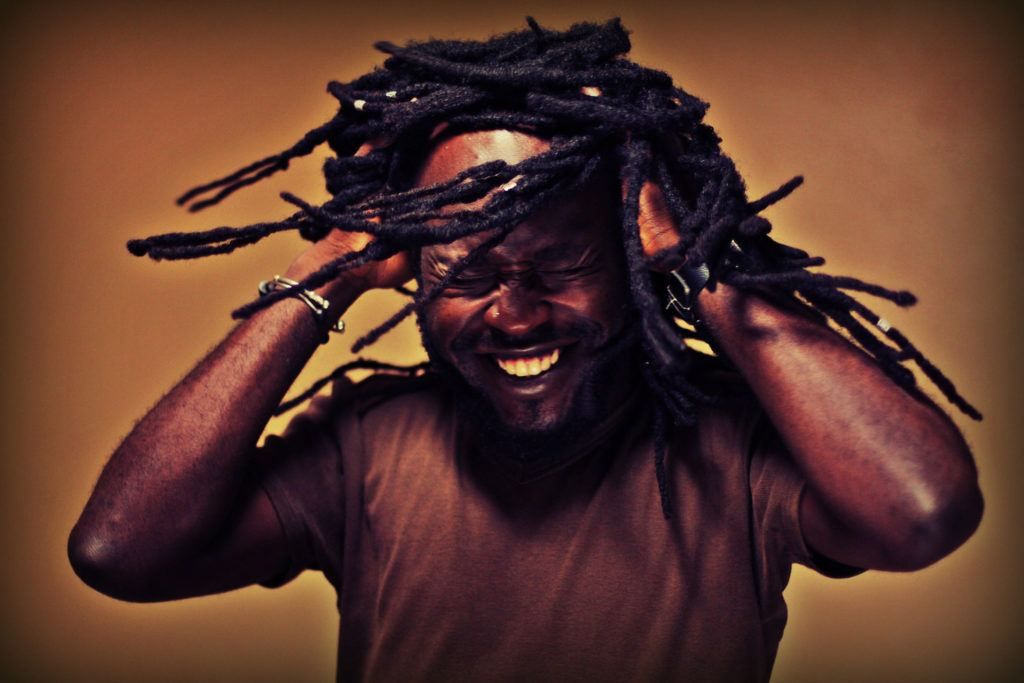Dzekashu MacViban
To observe the world in colour, especially through photographs, can be deceptive— years of perfectioning technicolour have made that possible. We tend to focus on the gloriousness of the colours, overlooking the simple things that really matter. Perhaps this reverence for colour dates back to Greek tradition, which affirms that beauty is not only symmetria (symmetry) but also chroma (colour). It would be a shame if we are to draw our sense of beauty solely from Greek thought— fast forward to (post)modernism which brought down much of the structure of pre-twentieth century practice. In her seminal book, On Photography, Susan Sontag posits that “To collect photographs is to collect the world” thus one can argue that Tito Valery collects the world, or to be specific, he has collected Dakar in his recent endeavour.
The first time I came across Tito’s photography was during one of his solo expos, entitled “Black and White are Colours Too.” These photographs in black and white mostly documented the nexus between everyday scenes and music as well as the blurring of lines in skin colour. There were place where he played with skin colour by experimenting with effects, such that one couldn’t identify who was black or white on the pictures.
Tito’s current project, Da(r)kar Faces, has a more experimental edge. It includes black and white film grain portrait pictures which focus on unconscious human daily expression.
These photos were taken in 4 different locations in Senegal (Dakar, Touba Dialaw, St Louis and Goree Island) between May and June 2014, while Tito was participating in a curatorial course at the Asiko Art School which was an off programme of the Dak’Art Biennale.
In 2010, the Centre for Contemporary Art, Lagos began an innovative project, Asiko, CCA, Lagos International Art Programme, curated by Bisi Silva with the aim of filling a gap in the educational system in Nigeria and many African countries. Asiko, which is part art laboratory, part residency and part informal art academy focuses in part on technique but mostly on methodology, critical thinking, and the implementation of conceptual ideas as well as the development and role of curatorial practice.
Tito’s experiment, nevertheless, doesn’t just end with an expo which is scheduled for the first week of August. It goes beyond that by virtue of the fact that this experiment, which culminates in an expo, is actually a springboard for another experiment which will focus on the modus operandi involved during the creation of art.
Artists from different artistic disciplines (photography, video, Installation, painting, performance and sculpture) will form a team which will attempt to answer questions like what African art is, who owns it and documents it. The culminating point will be a collective interdisciplinary exhibition. But that is just a veil. The real process, and heart of the project, involves the documentation of this endeavour; how each artist approaches the creative process. This documentation process, which will take the form of a diary, will be published on Bakwa magazine. Different artists will publish weekly, in an alternating manner, their modus operandi, that is, their method of working.
This approach is going to be highly interactive, allowing readers of Bakwa to observe and comment (or ask questions) on the artists’ creative process, a phenomenon which most artists prefer to do in isolation.
The artists involved will co-curate the exhibition (at the end of the project) and hence will be fully involved in the way their work is presented to the public by presenting a body of work that will be his/her answer to key questions on the state of African art. To keep the project as original and versatile as possible, each artist will be invited to dare unfamiliar mediums of expression, in addition to their known practice.
It is Tito’s hope that this project would serve as a springboard which would further the debate among scholars and researchers on what it really means to create art, as well as generate a form of inter-influence among artists while bridging the gap between the audience and the artist. But above all, he wants this project to be remembered as an interactive experiment in art, a much needed innovation in a landscape where being an artist is a constant battle— battle to be heard, battle to survive.
